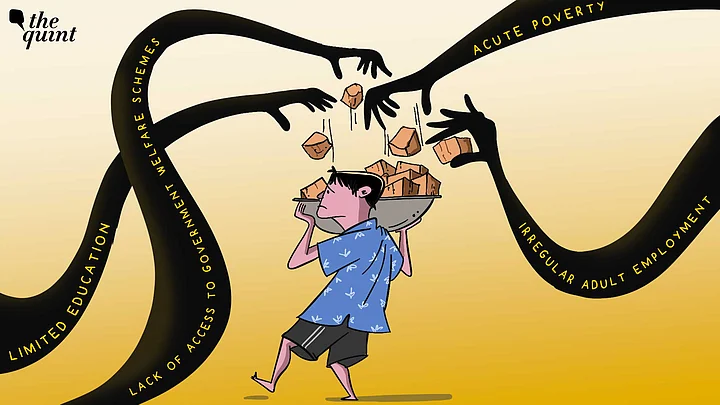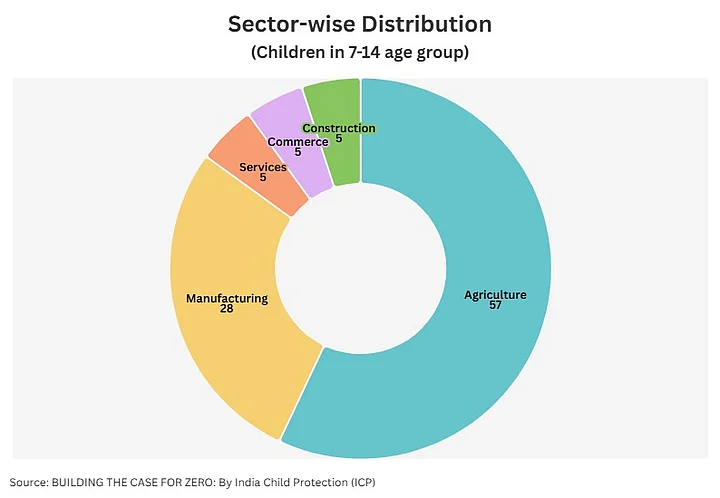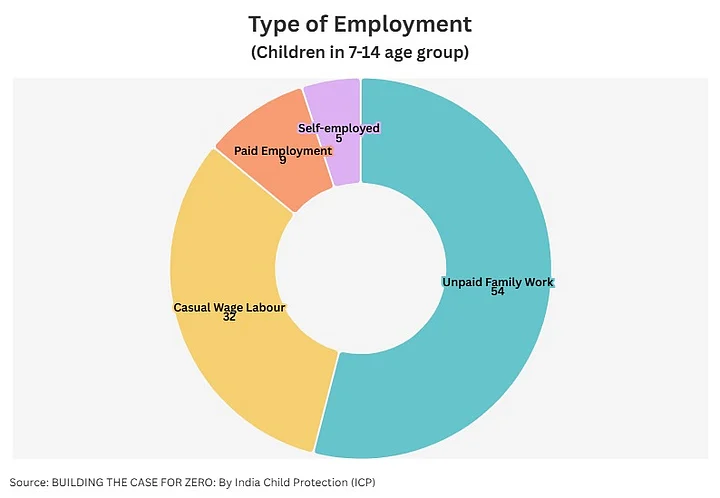Nearly 45,000 children have been freed from the clutches of child labour, trafficking and child sexual abuse from April 2024 to March 2025, according to a report.
90 percent of these, or more than 40,400 children, were engaged in the worst forms of child labour—including slavery, debt bondage, prostitution, pornography, recruitment for use in armed conflict; and in the production and trafficking of drugs.
The report was prepared by India Child Protection—an NGO dedicated to combating child sexual abuse and related crimes such as child marriage, trafficking and exploitation—using data gathered by Just Rights for Children (JRC), a network of more than 250 civil society organisations across India.
In 2015 at the United Nations General Assembly Summit, India had pledged to end child labour in all its forms, including modern slavery and trafficking, by 2025. But even as the deadline looms, India is not on track to achieve this goal.
The report stated that child labour continues to be the most prevalent form of exploitation as it remains a socially accepted crime. It underlined that prosecution of employers and enforcement of the law is the true deterrent to child labour. Let’s look at the findings:
Maximum Cases of Child Labour from Telangana
Of the 44,902 children rescued, the highest number of child labour rescues —11,063 or over 25 percent of the total — were from Telangana. This was followed by Bihar (3,974), Rajasthan (3,847), Uttar Pradesh (3,804), and Delhi (2,588).
Last month, a nine-year-old boy from Andhra Pradesh and belonging to the Yanadi tribal community, died after being forced into debt bondage. The employer buried his body in Tamil Nadu without informing the boy’s family. After the boy’s mother complained of harsh working conditions, an FIR was filed, and the employer was arrested.
In March this year, The Quint had reported how an 18-year-old girl was allegedly trafficked from Dindori in Madhya Pradesh days before her Class 12 Board exams and forced into domestic work in Delhi. She was allegedly abused and confined by her employer.
Child labour not only hinders children’s development—by depriving them of schooling and education—but may also lead to lifelong physical or psychological damage.
As per the report, 2,971 children were rescued from sexual exploitation, with maximum rescues being reported from West Bengal, followed by Bihar, Odisha, Maharashtra and Rajasthan.
More than 27,300 rescue operations were conducted across 24 states and Union Territories during 2024-25, wherein 86 percent were related to child labour, 10 percent accounted for sexual exploitation, while child begging made up the remaining 4 percent.
Further, over 11,400 missing children were identified, of which 8,750 were reported to be traced by the end of the assessment.
10.1 Million Child Workers in India—Half Unpaid, 1 in 3 Casual Labourers
India has more than 10 million or one crore working children in the age group of 5 to 14 years, as per the 2011 Census. The report brings up two interesting data points:
While the number of child workers has decreased in rural areas, it has increased in urban areas;
Boys are three times more likely to be engaged in child labour than girls.
Among the child workers in the 7-14 age group, a majority are involved in agriculture followed by manufacturing.
Again, among employed 7 to14-year-olds, more than half were engaged in unpaid family work, while one in three worked as casual wage labourers.
Child labour is the result of deep socio-economic vulnerabilities and stems from acute poverty, irregular adult employment, lack of access to government welfare schemes, and limited educational opportunities.
The report stated that children from low-income families, marginalised communities, landless farmers, illiterate parents and migrant workers are more vulnerable to being engaged in child labour. In turn, employers, particularly in informal, unregulated industries, exploit these conditions by hiring children as a cheap and flexible source of labour.
“This creates a self-perpetuating cycle: economic hardship leads to child labour, and child labour reinforces poverty by keeping children out of school and limiting their future earning potential,” the report noted.
Over 9,500 FIRs Filed, More Than 5,800 Arrested
The Child Labour (Prohibition and Regulation) Amendment Act, 2016 completely prohibits the employment of children under 14 years of age. The Act also prohibits employing adolescents (14–18 years) in hazardous occupations.
The report stated that legal action was taken in all the 27,302 rescue operations — with 6,959 (or 25%) resulting in General Diary entries, and 9,595 (or 35%) First Information Reports (FIRs) being filed.
In line with trends of previous years, which show that 92 percent of General Diary entries converted to FIRs, the number of FIRs filed in the 2024-25 period is set to increase by 6,402 and amount to nearly 16,000.
Additionally, 5,809 individuals were arrested; 85 percent of them were cases related to child labour. The report pointed out that Telangana, Bihar, and Rajasthan reported the highest number of arrests, while Uttar Pradesh and Madhya Pradesh had fewer arrests despite high rescue numbers—highlighting gaps in law enforcement.
Data published by the National Crime Records Bureau (NCRB) shows that between 2018 and 2022, the number of child labour victims increased by 44 percent while the number of FIRs registered under the Child Labour Act increased by 66 percent.
“This does not suggest an increase in child labour, rather confirms a stronger legal response over time,” the report stated.




